Camping in Wilderness

Camping in wilderness, sometimes called backcountry camping, is a great way to enjoy the multiple benefits wilderness has to offer--whether you're wanting to commune with friends or enjoy some solitude and digital detox. What do you need to know to camp in wilderness?
- Planning: Whether you're camping for one night or many nights, make sure you select the right destination for your skill level, climate, and time of year.
- Gear: Know what to bring, how to filter water, and deal with common injuries.
- Food and securing anything smellable: Choose meals that keep you going, learn more about no waste camping, and know how to store your food safely away from animals.
- Campsites: Pick a good campsite and understand regulations for wilderness travel, camping, and permits (if needed).
- Campfires: Understand the alternatives to wood campfires, as well as how and where to build a campfire safely.
- Pooping: Knows the best practices for dealing with human waste and feminine hygiene in the wilderness.
- Behavior: Understand Leave No Trace principles including being considerate of other campers and keeping a clean campsite, leave drones at home, be a responsible dog owner, and help to make wilderness an inclusive public space.
Planning Your Wilderness Camping Trip
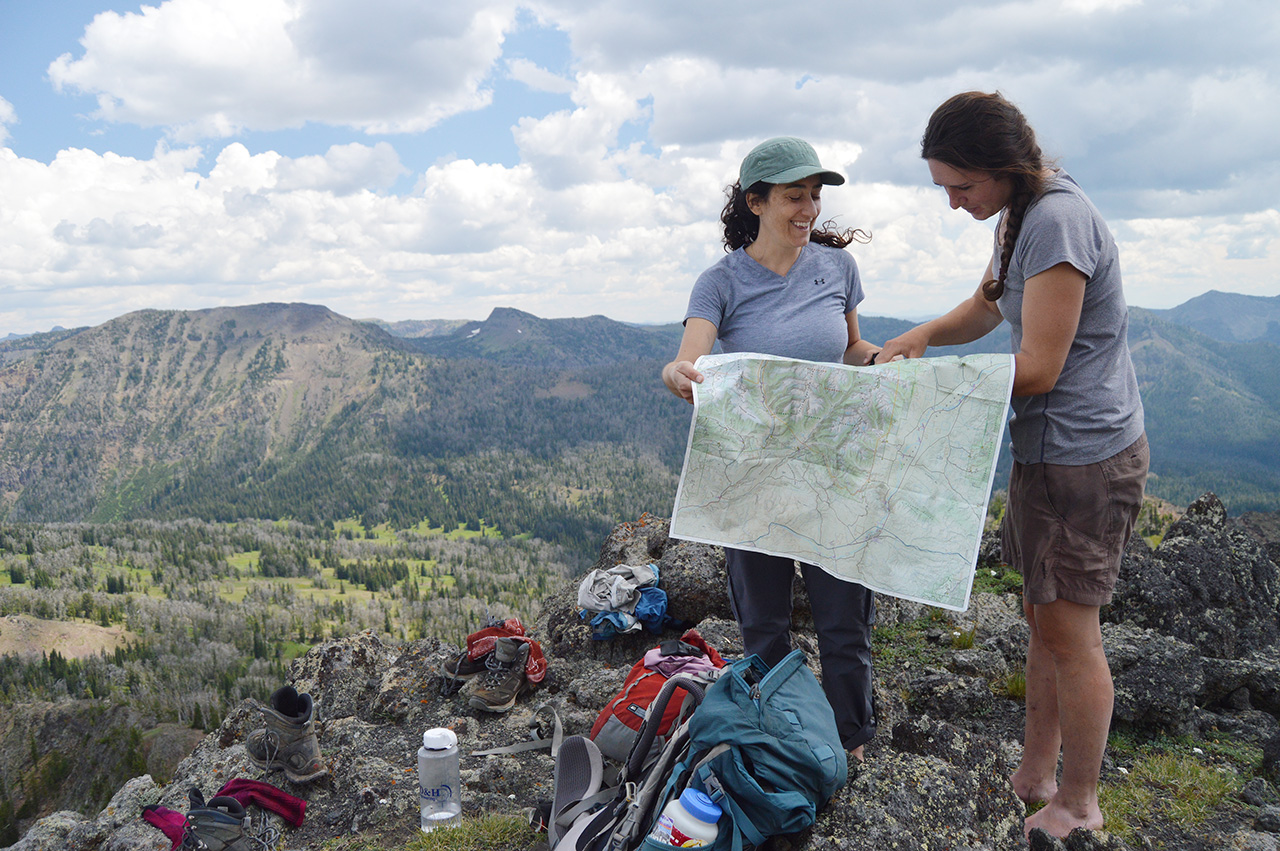
From fresh air to dark night skies, wilderness camping has many amenities. Making sure you're prepared to enjoy these amenities means you need to plan ahead:
Selecting a Choice Destination
Know your limits when choosing a location. This includes evaluating: physical strength and stamina (of yourself, kids, pets and others in your party), time available, difficulty of terrain, time of year (summer vs. winter camping), and safety. In spring, be prepared for mud and commit to walking through it!
Consult Maps and Weather Forecasts
Online wilderness maps are great for advance planning and research, but there's no substitute for having paper maps in the backcountry. Paper map sources include: MyTopo, National Forest Map Store,USGS quads, and at your local sporting good store. Check the weather in advance and when you begin your trip, and know how to interpret weather in the backcountry.
Gear for Wilderness Camping
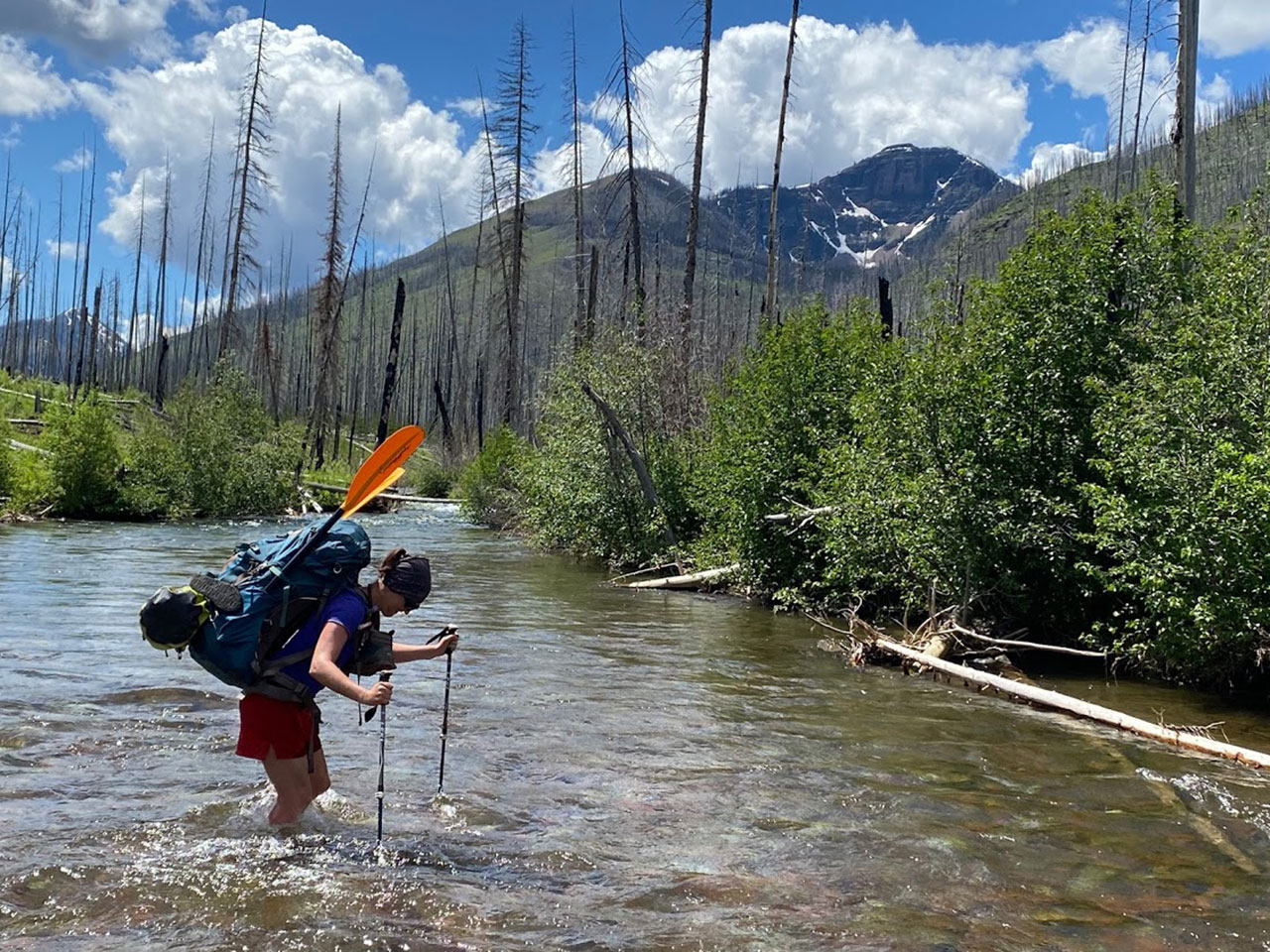
What to Bring
Although there are many outdoor brands, in general, for wilderness camping you'll need:
- Clothing and footwear: Dress in layers but avoid cotton; choose shoes for hiking, water, and lounging at camp; and plan for inclement weather from snow and rain to intense heat and humidity. Break in your shoes beforehand to avoid blisters.
- Shelter and bedding: Choose a shelter that fits your family or group size and needs. Tents provide additional space and warmth while hammocks are lighter, and when used properly, provide many of the same benefits as tents but with a smaller footprint of impact on the land. Consider the right combination of sleeping bag, sleeping bag liner, sleeping pad, and pillow to keep you warm enough at night. If your gear is new, spend the night "camping" in your backyard to ensure your sleep system is waterproof, warm, and comfortable.
- Food preparation and storage: Test your stove by cooking a backcountry meal at home. If using a fuel-powered stove, verify your estimates of fuel needed for your trip. Clean your camp cookwear before departing and take measures to eliminate unnecessary items and food packaging. Make sure you have equipment such as a bear canister or hang bag and rope to keep food safe from animals.
- Campfires: Lightweight fire pans or fire blankets are a must to help prevent vegetation and soil damage in areas without existing fire grates. Only have fires when and where allowed.
- Water filtration: Clean and test your filtration system at home and consider bringing a backup filtration method (ex. Iodine tablets) in case your primary one fails in the field.
- Supplies for human waste, hygiene, and first aid: Read more about pooping in the wilderness below, but overall make sure you have adequate human waste and hygiene supplies for your trip and be prepared to pack out toilet paper, feminine hygiene products and human waste (if required by regulations in WAG-type bags). Stock your first aid kit and know how to use the items in it for minor injuries like cuts, scratches, burns, bug bites, sunburns, and ankle sprains.
- Navigation: Whether you use a paper map and compass, a GPS or another digital navigation device, make sure you know where you're going and how to get there. Always bring extra batteries for digital devices.
- Entertainment: Journals, paperback books, art supplies, and travel games are all great for downtime at camp.
- Specialized recreation: If you're hunting, fishing, climbing, backcountry skiing etc. in addition to camping, make sure you include any specialized recreational gear along with the basics above.
While recommendations on specific types of gear are not provided here, outdoor brand websites and media provide helpful advice on how to choose the best gear for you. Test your new and used gear at home before any camping trip to identify:
- What's missing?
- What's broken?
- How do I use/operate X?
What to Leave at Home
Wilderness travel is often all about weight--minimizing weight, that is. It's important to determine what's essential, what's nice to have, and what's not necessary or appropriate. Here are some things to consider leaving at home:
- Axe, hatchet and saw: These tools are the primary causes of tree damage and felling, and aren't needed for a wilderness campfire.
- Speaker: While you might enjoy listening to music, others might not. Be consider of other visitors by using earbuds if you bring music into the wilderness with you. Using earbuds means you can enjoy your tunes while others can enjoy natural sounds.
- Cellphone: While it might seem downright scary to imagine spending even a day without your cellphone, consider the health benefits of unplugging such as being in the moment, being truly present with friends and family, eliminating distractions, and increased focus and relaxation. Even today, in most wilderness areas you won't have reception anyway. Never rely on your cellphone for use in an emergency, and don't let a cell signal give you a false sense of security.
Backcountry Eating
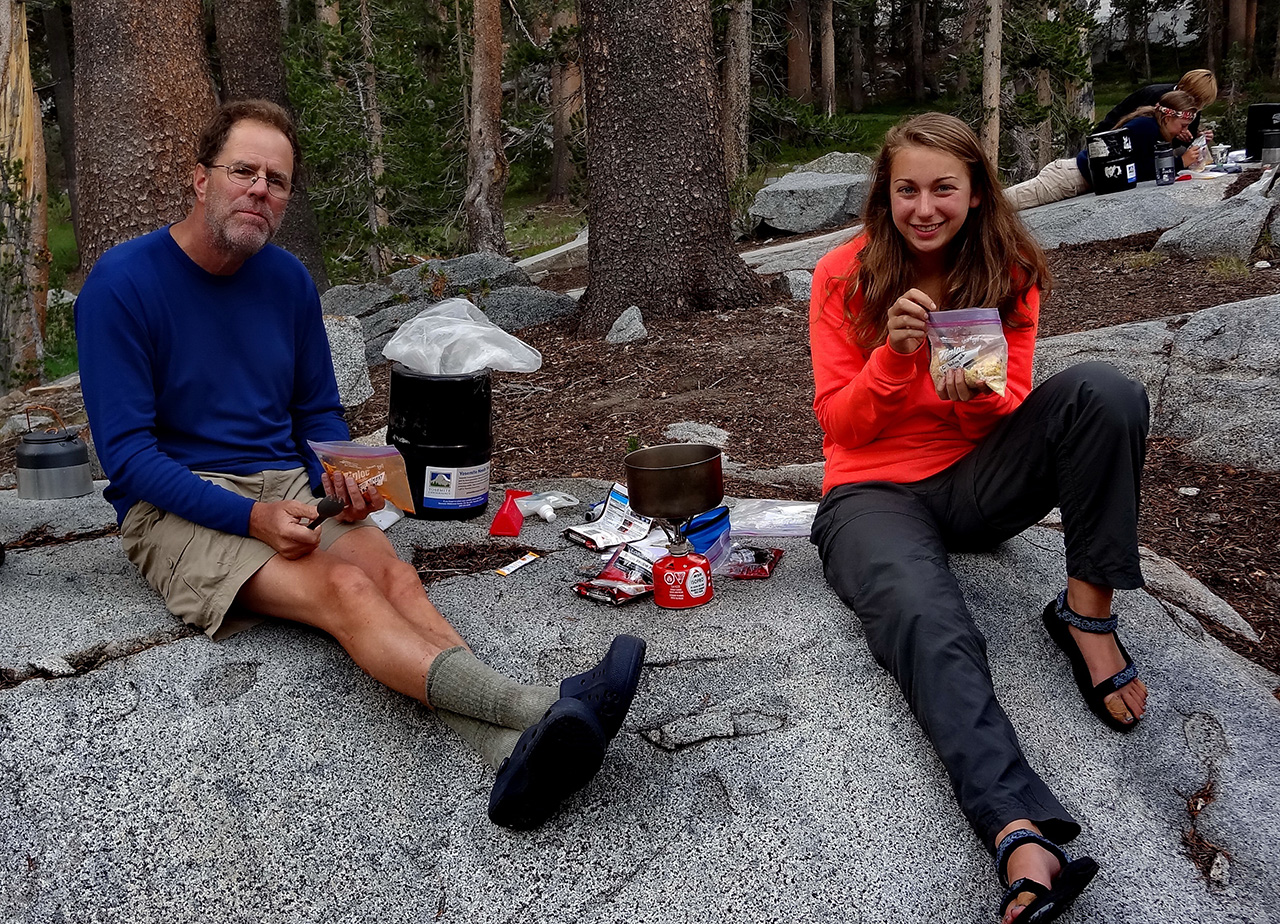
Meals that you cook in the backcountry can be nutritious, quick to fix, lightweight and cheap. Overall, minimize waste, extra packaging, and single-use plastics. Consider both commercial freeze-dried meals and creating your own meals from locally-obtained bulk foods (see the Wilderness Ranger Cookbook for recipe ideas or REI's expert advice on meal planning). Generally, consider the following when planning your menu:
- Quantity: Make accurate estimates of how much you and those in your party generally eat and then add extra. If you normally skip meals at home, remember that you will be exercising and needing more calories. Include snacks for times when you don't want to or can't stop to cook a full meal.
- Nutritional value: Choose meals with balanced nutritional profiles to help you maintain energy throughout the day. Items, like candybars, that contain high amounts of sugar will give you a quick energy boost but will not sustain you longterm. Conversely, protein heavy snacks and meals take longer to digest but keep you feeling full longer.
- Weight: Dehydrated and freeze-dried foods are lightest, but require rehydrating to eat. Fresh fruits and vegetables are heavier, but can be eaten raw. They also add fresh flavors and textures to cooked meals. Balance food weight against trip length and the overall weight of your pack. Larger group meals for multi-person parties can be distributed among members to distribute food weight evenly.
- Preference: Make or choose foods you already like to eat and avoid those you don't.
Regardless of what type of meal you're cooking and eating, do so on a durable rock surface as shown in the picture above to protect vegetation and soil, but to also make it easy to see and retrieve dropped or spilled food.
Securing Your Smellables
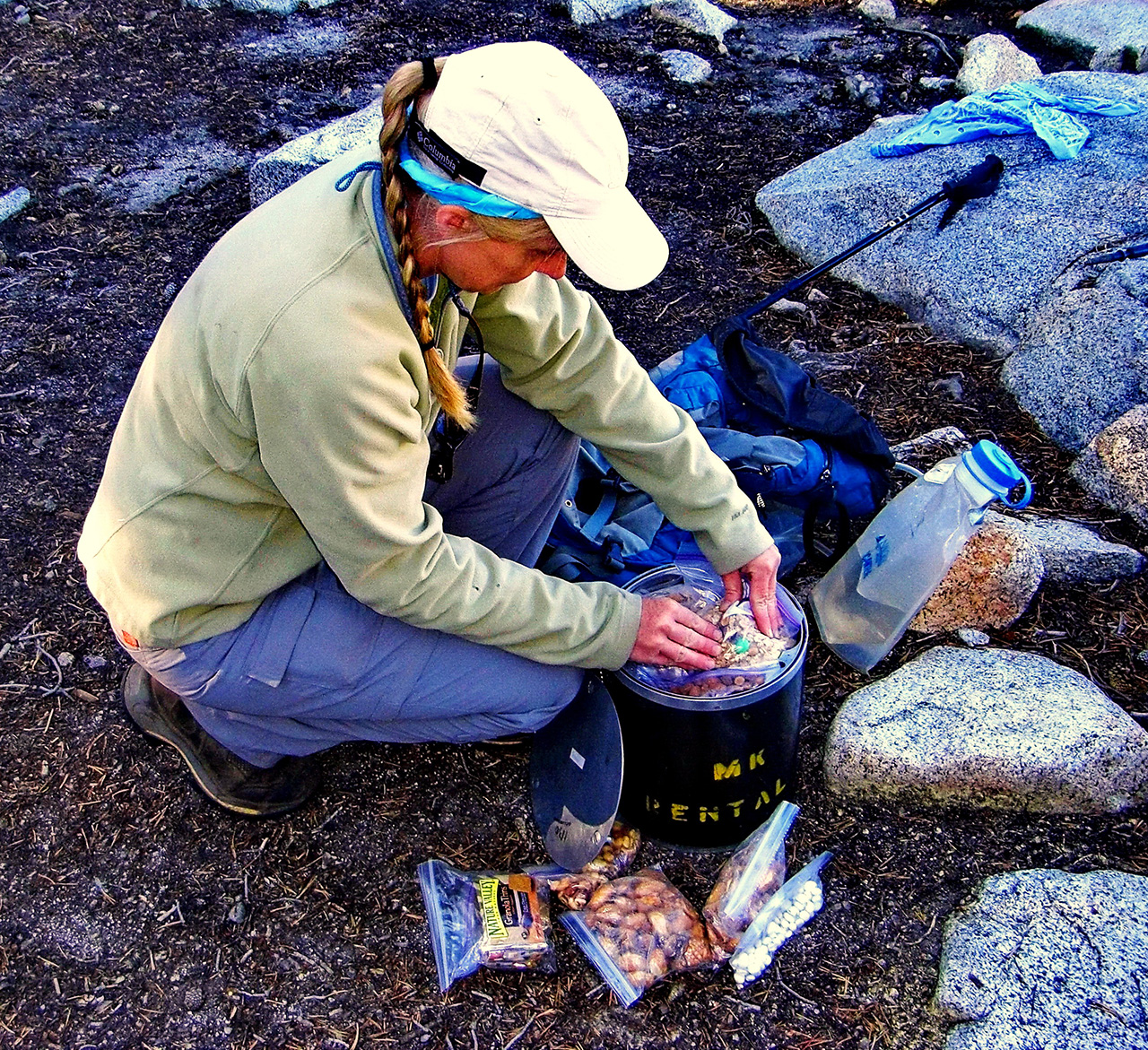
In all wilderness areas you must take measures to secure your food, smellable items like medicines and toiletries, and trash from animals--bears, squirrels, even skunks--at night and any other times when food is left unattended. Human food is nutritionally unhealthy for wildlife. Small animals, like chipmunks, and large animals, like bears, can develop attraction behaviors over even the smallest amounts of dropped or spilled food, bringing them back to campsites night after night. The smellable items that attract them may not even be edible, such as insect repellent, sunscreen, or even lip balm. When bears become habituated to campsites, lose their fear of, and threaten humans, park and forest managers may need to kill the bears. You prevent this by storing food and smellables properly.
Check the regulations since some areas require that you use bear canisters or food lockers/hang stations at designated camping areas.
Video: Bear Hang How-To
If you hang your food, trash, and smellables, bring the right gear and know the proper techniques for hanging them. They must be at least 12 ft off the ground, at least 6 ft away from any tree trunk or large limb, and at least 6 ft below the supporting limbs, which must be strong enough to support your food bags and a climbing bear. This requires a branch that's about 20 feet up, meaning that about 60 feet of parachute cord (or other rope) is recommended. These illustrated examples of ways to hang a food bag provide tried-and-true options for securing your food in bear country.
Where to Camp
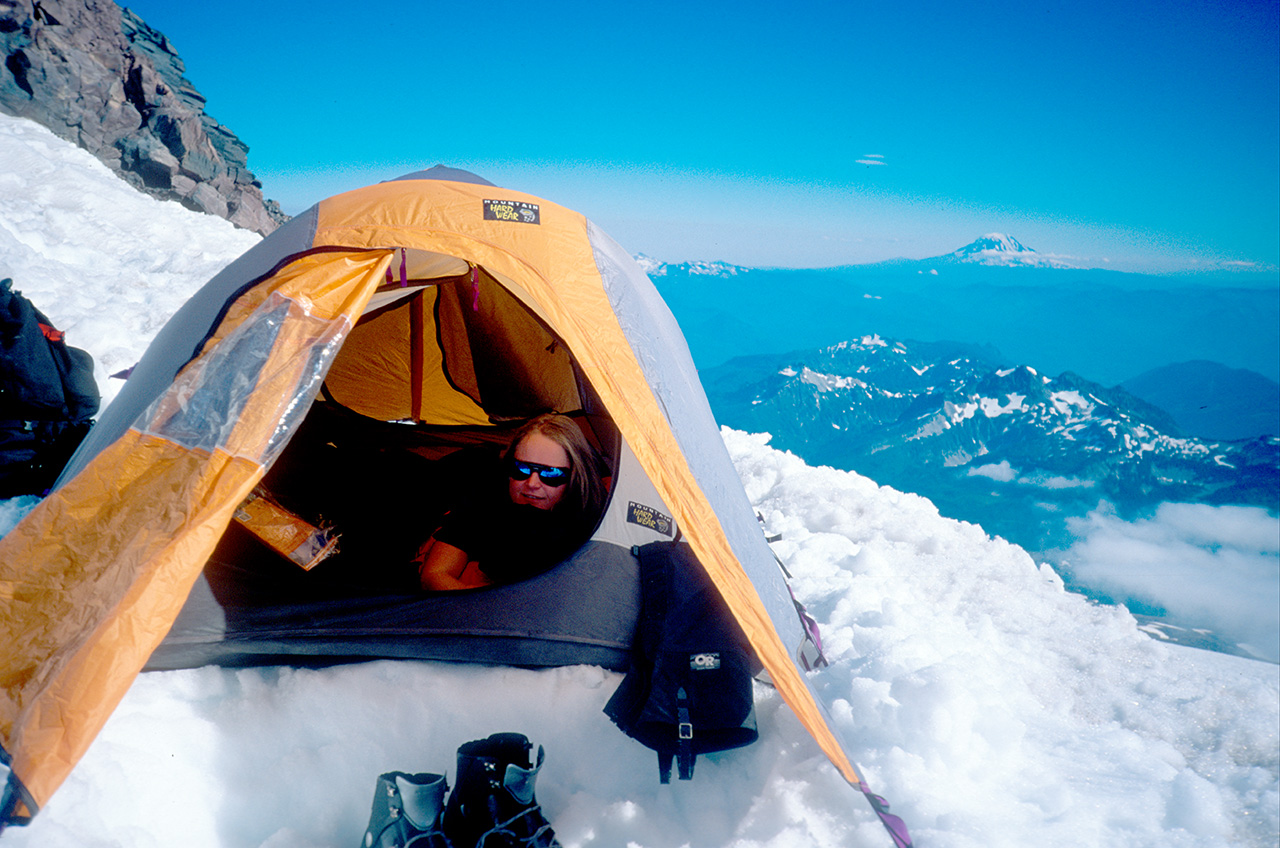
In many wilderness areas, you can camp wherever you want, however, that doesn't mean you should just camp anywhere. In general, choosing a good wilderness campsite means one that is well-established, located on rock, gravel, or bare soil without bushes or vegetation, and is at least 200 feet (70 adult paces) away from water, trails, and other campsites.
Some wilderness areas require you to camp at designated sites that you may need to choose in advance when obtaining a permit. Make sure you stick to your itinerary and camp at any sites you have chosen, or arrive early to choose from first-come-first-serve sites.
Campfires?
Today, there are great alternatives to campfires that provide warmth, light, and ambience.
Consider the following when deciding whether to build a campfire:
Regulations and weather: Know where campfire restrictions are in place beforehand. Even if campfires are allowed, think twice about starting a campfire during hot, dry, and/or windy conditions or in places where you do not have access to enough water to put your fire completely out.
Wood and fuel: Cutting down trees--alive or dead--is prohibited in wilderness, so any wood used for campfires should be already on the ground, dead, and breakable by hand (less than 2 inches in diameter). Leave axes, hatchets, and saws at home. Don't break dead lower branches off live trees. Don't bushwhack for long distances to gather wood, as this tramples vegetation. Avoid having a campfire in places where wood is scarce or visibly picked over since decaying sticks, twigs, and other burnable materials provide essential and unique nutrients for new trees and small wildlife. Burn only wood in your campfire. Carry out all garbage, cooking oils, and leftover food as they rarely burn fully and attract bears, skunks, and pesky wildlife to your camp during the night.
Fire size and location: If an existing fire grate or ring is available, use it. Avoid creating new fire rings using rocks or logs. Instead, use a fire pan or fire blanket to prevent your fire from damaging the underlying soil or vegetation, such as tree roots. Keep wilderness fires small and only burn them for a short period of time. Put them out entirely with plenty of water. A fire that's complete extinguished is cold to the touch on the surface and underneath (i.e. poke your finger down into the ashes). Either bury any remaining ashes and charcoal, or crush and spread them widely away from your campsite. Be aware that spreading ashes and charcoal that are not fully extinguished can start a wildfire. Cathole trowels and plastic bags are handy for this chore.
Video: Campfire Alternatives
Video: Build a Backcountry Poop Kit
Video: How to Poop Outside
Leave your poop or pack it out?
For a quick primer, use this pooping in the woods decision tree, but we'll go into more detail on this important choice here. On the way to your trailhead, use existing facilities before you begin your wilderness trip. Always bring and use your own toilet paper and hand sanitizer, as existing facilities may not be stocked or available. If outhouses, pit toilets and privies are provided within the wilderness--such as at some backcountry campgrounds--you should use them.
In low-use areas, poop in a cathole. Use your sturdy trowel to dig a cathole that's 6-8 inches deep (4-6 inches deep if you're in the desert) and is at least 200 feet (about 70 big steps) away from trails, campsites, and water. Whenever possible, use a remote location during the day's travel to prevent lots of catholes near campsites. Good places to dig a cathole include dark, rich soil in thick undergrowth, near downed timber or on gentle hillsides. Don’t leave poop under rocks because it will decompose slowly there and may wash into water sources. Plan ahead to pack used toilet paper, wet wipes, and flushable wipes out of the wilderness, since this practice leaves the least impact on the wilderness. Make sure you have a dedicated ziplock-type garbage bag for this purpose. Otherwise, bury toilet paper deep in your cathole by using a stick to push it to the bottom. Keep in mind that toilet paper takes 6-12 months to degrade naturally; disinfecting wet wipes can take up to 2 years. Don't burn used toilet paper or wipes, as this is both a public health and fire hazard for you, others in your group, subsequent visitors, and rangers. Squeamish about packing out? Watch the backcountry poop kit video above to learn how easy and sanitary this is.
In some areas, you may be required to pack all your human waste, not just the toilet paper, out of the wilderness for the duration of your trip. When visitors don't properly dispose of their human waste, pack-out requirements become increasingly necessary for public health reasons. Check the regulations, but assume that human waste pack-out is required in the following areas:
- High-use trails, campsites, or destinations
- High-altitude or alpine areas and on glaciers
- Deserts
- During the winter or in snow
- Beaches or other coastal areas
- Slot canyons where you may be hiking in water
- Anywhere runoff may wash waste into water sources
- River corridors
Really squeamish now? Don't worry. Waste Alleviation & Gelling (W.A.G.) bags from brands like Cleanwaste, groovers, and other camp toilet systems are easy-to-use, effective, and sanitary. Watch this WAG bag video to see how simple and not-at-all-scary it really is.
Peeing in the Wilderness
Urinate away from the trail on rocks, gravel or sand, whenever possible. Avoid urinating near campsites or in the same place multiple times. Areas where people have repeatedly urinated will often smell and can attract stinging insects, like wasps. Also avoid urinating in or near lakes, rivers, springs, or other bodies of water, unless regulations recommend it (ex. such as on a wilderness river rafting trip in the river corridor of a high-volume river). Urinate at least 200 feet (about 70 big steps) away from all water. Unfortunately, more and more often, prescription drugs, hormones, and pesticides are being discovered in remote lakes, which wash into them when people have urinated too close to the lake.
Feminine Hygiene in the Wilderness
There are several options for managing feminine hygiene in the backcountry. In wilderness, make sure you pack out all feminine hygiene products and wipes, just as you would used toilet paper. Be sure to store these along with other odorous garbage to ensure they are not bothered by wildlife. Adding a few crushed aspirin, used tea bags, or baking soda to a garbage bag can help minimize odors.
How to Behave While Wilderness Camping
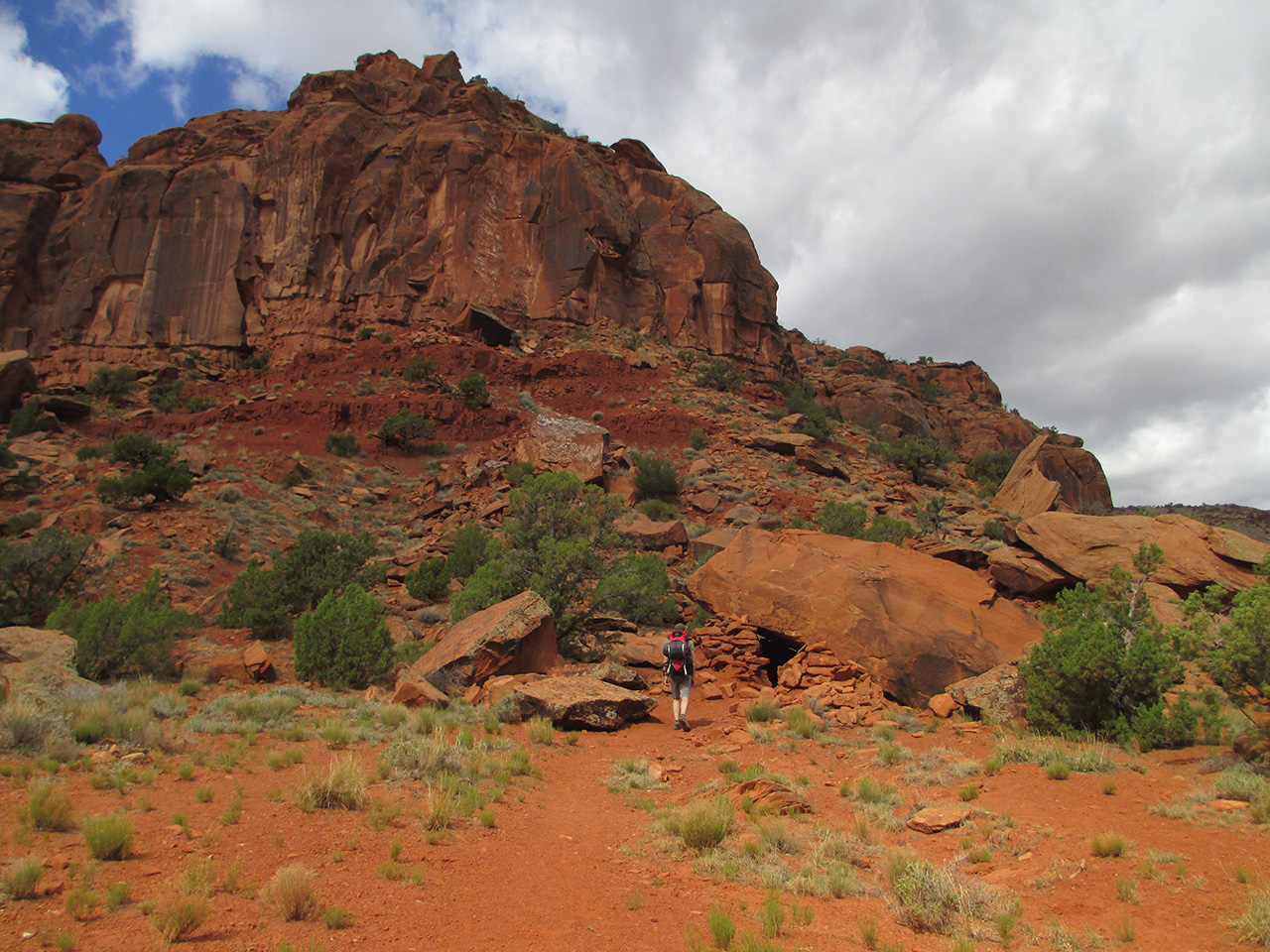
Many people go into the wilderness to seek solitude. To ensure that you and others have positive wilderness experiences, consider how your behavior impacts other campers:
- Proximity: Where possible, avoid camping within sight or sound of other groups. Adhere to camping setbacks from lakes, in particular, to ensure that campers across the lake don't see your campfire or hear your conversations (noise travels really well over water).
- Noise: Keep your group size small and within regulations. If you are near others, talk softly and avoid yelling. Leave your music at home or bring headphones. While music can provide great ambience at camp or on the trail, it drowns out natural sounds and can be offensive to other nearby or passing wilderness visitors. Unless you're hunting, leave firearms and fireworks at home. Recreational shooting as well as fireworks are prohibited in most wilderness areas.
- Light: Keep campfires small and avoid overusing flashlights or other light sources if you are camping near other groups. Instead, enjoy the stars in a dark night sky.
- Dogs: If you bring your dog, keep your dog leashed and quiet while at camp so it does not harass other campers, hikers, or wildlife.
- Cleanliness: Keep your camp clean and pack out all garbage, including micro-trash, from your campsite. See somebody else's garbage? Pack that out too. A clean camp ensures that others who use the same camp after you don't see evidence of your visit.
- Privacy and Technology: Leave drones at home, as these are prohibited in all wilderness areas and fines apply. While most wilderness areas don't have cell service, in areas where you might have a signal turn your phone ringer and alerts off so that other visitors don't hear them.
- Inclusion: People of different ages, ethnicities, cultures, abilities, and backgrounds all value and experience wilderness differently. As awareness of racism, sexism, adultism, ableism, and other prejudices increases in our society, take stock of your impressions, thoughts, and reactions towards other visitors you encounter in the wilderness. Be aware of how seemingly innocent gestures or verbal comments can affect everyone's right to enjoy our shared public lands.